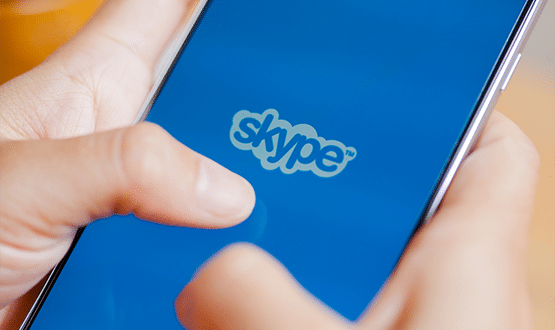How can we make teleconsultation work for the NHS?
- 16 April 2019

The argument that the NHS should use more video calling technologies is frequently made. But there needs to be an appreciation that Skype and teleconsultation are not synonymous, argues Ian Jackson.
When the NHSmail 2 Portal was introduced to healthcare around three years ago, Skype for Business was added in a primitive form, mainly as an instant messaging tool. Since then there has been an increasing focus on the potential of teleconsultation in the NHS – including suggestions in the Long Term Plan of increasing numbers of digital first appointments.
But if teleconsultation is really to work in the NHS, we need to consider the core aspects any solution is going to need.
So, as a clinician, what do I need from my teleconsultation technology?
- I need a simple click to start my teleconsultation
- I need a system that shows me my video appointments for the session, and which of my patients are logged in, ready to be seen
- I need confidence that the patient I am talking to is who they say they are, as I may not have met them before. That means secure login and linking to NHS number is essential, with clear identity points that I can verify with my patient from the start
- I would then need the ability to link the system to my electronic patient record, initially so staff can organise and record appointments. But in fullness of time I would like the ability to record conversation and either have it transcribed or stored directly in the patient record.
- If I organise group sessions, such as in mental health, I would like the ability to have a simultaneous link to multiple patients
- A reporting tool that provides information such as the number of teleconsultations completed, average duration and patients having multiple teleconsultations would be useful.
I think this points towards the NHS needing to looking at digital solutions holistically, rather than as a point solution. My belief is that if you decided to use Skype for patient consultations or for instant messaging, you would actually be creating silos of technology. So I do not believe healthcare should use the terms ‘Skype’ and ‘teleconsultation’ as synonyms.
And to make teleconsultation effective, I think we also need to consider related aspects. For instance, we need to think about how instant messaging can sit with such a setup, and how that messaging in turn supports more appropriate triage. That includes reflecting on:
- Suitability for primary care networks. Instead of enquiries coming to a GP surgery through a phone call, imagine if they came via messaging. This could be coupled with immediate clinical triage – ensuring patient requests went to the most appropriate member of the team immediately – and messages back to the patient to keep them informed.
- The ability to have secure two-way messaging to patients. Again, these could be routed to the most appropriate person and the response a message back or a teleconsultation if appropriate.
- The ability to provide support to patients post-discharge. Surgical patients currently are offered phone numbers to call, should they support after discharge. But messaging could replace this as would allow these enquiries to be dealt with by an on-call team. And patients could have a teleconsultation as part of their follow-up process – allowing clinicians to see wounds and drains, or see the patient walking in their home, as part of the assessment.
In addition, messaging platforms could be used to send results to a patient, or to gather feedback.
For me, CIOs and CCIOs need to build a picture of the possible benefits of such a setup – moving away from speaking of Skype and towards talking about an integrated messaging and telecommunications platform. There also needs to be a tight focus on outcomes. Moving to teleconsultation in and of itself shouldn’t be the goal: it should be offering better, more efficient care for patients.
Ian Jackson is medical director and clinical safety officer at Refero



8 Comments
Automatic transcription seems a very worthwhile feature, enabling the whole call to be included in the record and saving anyone from having to create a summary of it.
The one question I would ask is why there is such an emphasis on video. For many consultations just audio would be perfectly suitable.
That’s standard practice in IT marketing. Vendor ‘Key needs in activity X are a,b and c and, lo and behold, their product, the Hokey-Cokey 2000 does all that! Other than that, stating specific objectives is good practice, unlike some vague ones like ‘ensure patient integrity ..’ etc.
I really couldn’t agree more with the conclusion. But speaking as someone who has implemented Skype successfully for patient consultations, the author himself seems to be ignoring his own advice of not focusing on the product but on the outcome.
We use a combination of technologies and a partnership approach built on the o365 Skype infrastructure. Providing outreach appointments to hard to reach groups across a variety of mental health conditions along with live MDT liaison during home visits.
(Of course we don’t use the national abomination of this product, we use it directly from Microsoft so that we have all of the features we need plus augmentation from other vendors for things like authentication and virtual waiting rooms.) If anyone would like to see what we are doing in Berkshire as part of our GDE Programme in this area please do get in touch.
I agree that a holistic approach is good. However, if you demand all of the features you list, video consultations will never get started. A patient sitting in front of you in the surgery is not linked up to your NHS systems, so a video consultation doesn’t need to be linked to other systems in order for it to provide benefits. Get started with the basic system and then improve it.
In the early 2000’s Media Logic trialled video calls via television for NHS consultations in the Midlands. Patients, Nurses and Doctors all agreed it was a huge benefit. The only reason it wasn’t rolled out nationally was that the cable companies on whom we depended for the link were effectively bankrupt and unable to pay for the quadratic amplifiers needed in order to roll it out nationally. Now that we have a superior data transport system (www) we should roll out these digital consultations as quickly as possible.
That’s a very helpful right up of the use cases and separation of the functions at play, great post.
We did some open source work a way back on this very topic demonstrating one of the H&SC 2020 vision priorities, but using the open source project WebRTC ( https://webrtc.org/ ) hooked into our open source showcase stack (Shared Care Record & PHR etc)
https://ripple.foundation/2016/08/open-source-telehealth/
Teleconsultation as a standalone solution is perhaps adding more complexity into the mix and could have limited update, but a fully integrated solution with audit into the core system would be very powerful.
I do think referring to the technology as the brand, although helps people relate to what it is, also narrows the focus to that branded solution (a marketers dream), especially when this is a generic term. For example Google Meet, Appearin, Facebook messenger all make use of WebRTC.
Transcript/recording not being asked for at present but being used in States particularly during discussion where useful to give patient copy and keep copy of what was said for medico-legal reasons. I suspect it will be of interest going forward.
Good point about digital inclusion from point of view of skills, ability and even accessibility to broadband. Our experience is that carer/relatives can help and value not having to take relative to hospital. However we do need to ensure that we get it right for all groups.
David. That may be true, but do you disagree with the critical components for success that Ian has set out? They seem well considered, to me. The ability to capture properly the outcomes of digital consultation, and to have the records available during it, are fundamental for safe teleconsultation. I’m not sure that it requires a full recording or transcript of the whole discussion: we don’t do that in analogue consultations. The other critical thing is that we consider the importance of digital inclusion for patients: we must avoid creating a “digital inverse care law” (DICL) as we roll out digital approaches to delivery.
Funnily enough, those are all modules that Refero does…
Comments are closed.